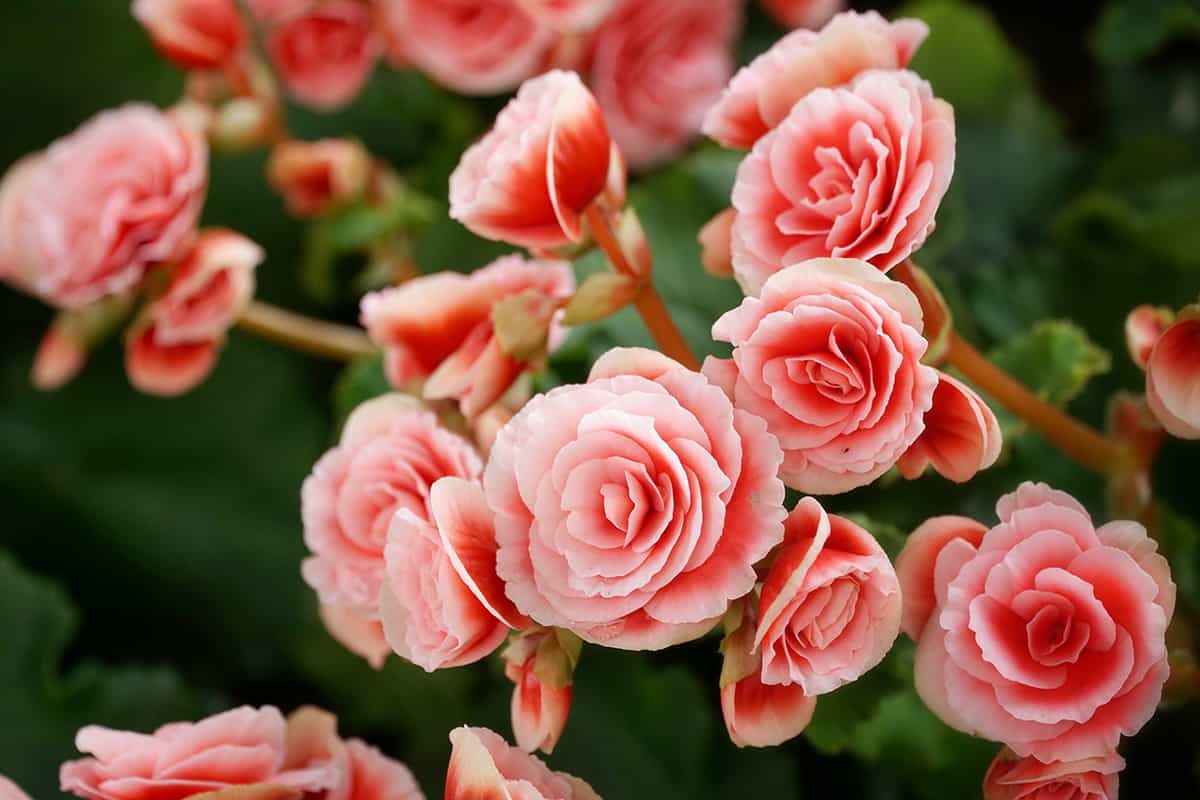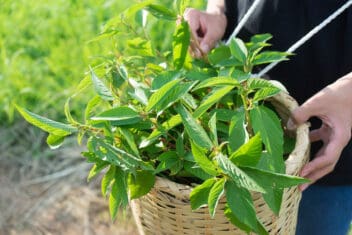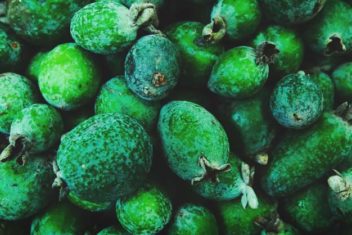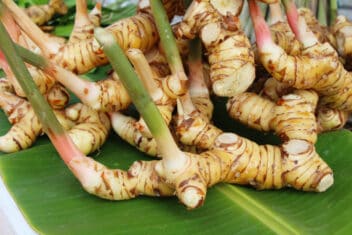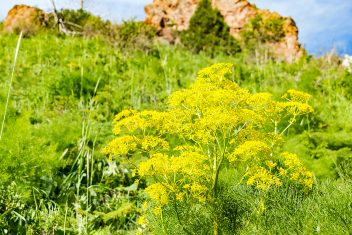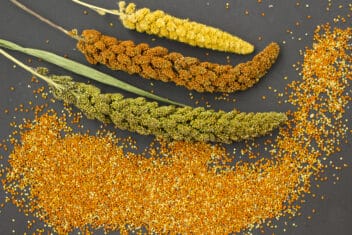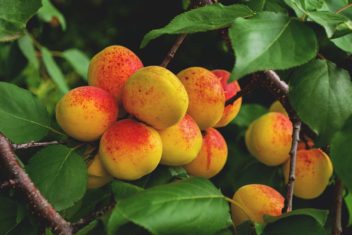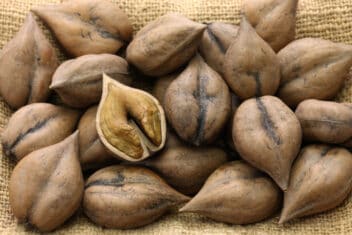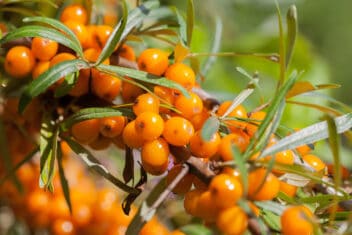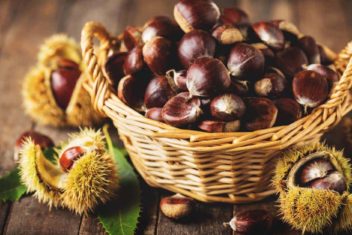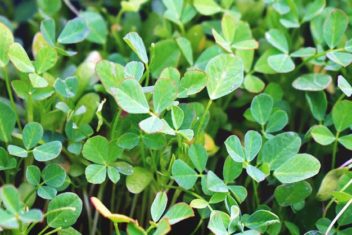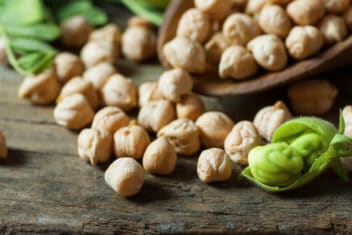Begonias are one of those plants that many people don’t take full advantage of. Sure, they’re pretty growing in the garden, but many of them are edible and they all attract a range of pollinators.
I plant edible begonia in my garden for multiple purposes. I like the taste, they attract bees and they don’t mind shade, so I still get bright flowers where many others won’t grow.
If you want to add to your flower garden, let’s get going on growing begonias.
Best Varieties of Begonia
I must make it clear from the start. Not all begonia are edible. I say this because begonia is one of the most common flowers planted in many places.
Public parks and green areas are often awash with the amazing colors of begonias, but it doesn’t mean you can grab a handful while you sit eating lunch in the sun.
If you want to eat your plants, be sure to get the right kind.
If you’re just looking to add some beauty to your garden or to attract pollinators, you can go with any type you prefer.
Tuberous Begonia
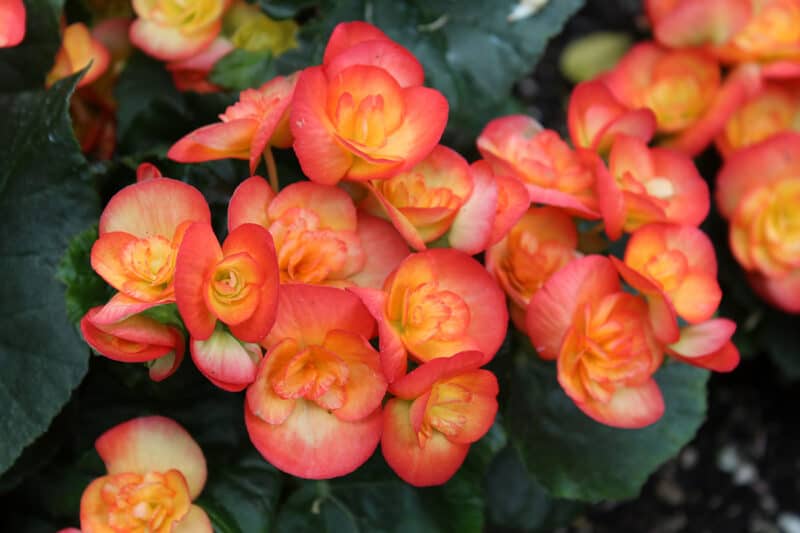
The flowers, leaves, and stems of tuberous begonias (Begonia X Tuberosa) are edible and can range from sweet to tart. The stems can be used in place of rhubarb since both plants contain the same substance known as oxalic acid, which gives them the tart flavor.
Tuberous begonias can be upright growers or trailing in nature, and they come in multiple different colors.
‘Dusty Rose’ features frilly pink flowers and deep green succulent leaves. ‘Dragon Wing Pink’ can handle hot, humid weather and doesn’t mind a bit of shade.
‘Encanto Orange’ has flowers that look like bright red fuchsia blossoms in masses that trail along the plant. ‘Nonstop Fire’ has massive double blossoms that keep going all season long.
Fibrous Begonia
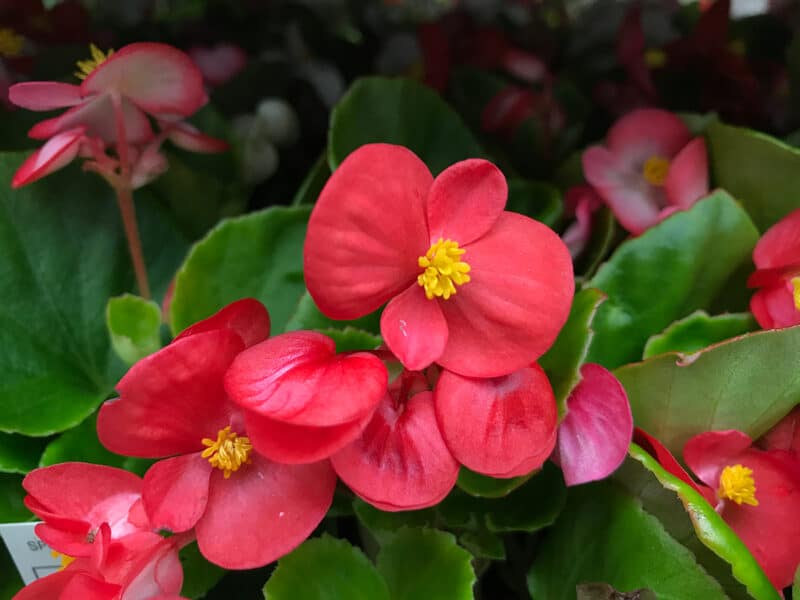
This category of begonias includes the common wax begonia (Begonia cucullata).
This type is a common weed (it has naturalized in Florida and Hawaii), as well as a lovely cultivated flower. It can be eaten both cooked or raw, and the fleshy leaves are slightly less bitter than the tuberous begonia. The leaves are red to brown in color and the flowers are usually pink, white, or red.
Wax begonia tolerate more shade than tuberous begonia.
‘Charm’ is a particularly pretty variety, featuring bright pink flowers with a yellow center. ‘Richmond’ has green foliage with red on the undersides, so it’s perfect in a hanging basket.
Hardy Begonia
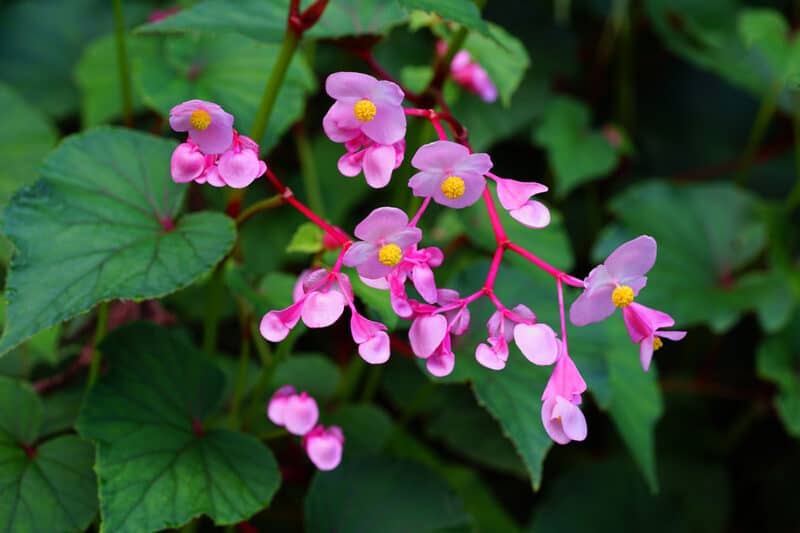
Hardy begonias (Begonia Grandis), as you may have guessed, can grow in cooler areas than some other varieties. This isn’t the type to go for if you want to eat your plants, however.
‘Alba’ has small white flowers on elegant red stems. It does well even in full shade. ‘Heron’s Pirouette’ has dainty pink flowers and grows in a lovely clump that gets only a foot or two tall.
How to Plant Begonias
Begonias grow well in USDA Zones 9 to 11, while the hardy varieties can grow in zones 6-9. Begonias can also be grown as an annual if you desire.
Depending on the type, begonia can tolerate shade, partial shade, or full sun as long as it’s not too hot. Morning and afternoon sun is best.
Begonia can be happy in most soil types, but the best type is loose loamy soil that drains well. Aim for a pH of 5.2 to 6.0.
When to Plant
Transplant your seedlings when you are certain all risk of frost has passed. Begonia is frost tender and a consistent temperature above 50°F is required.
Begonia should be planted about 7 to 10 inches apart.
Planting Seed
Planting begonia from seed is a difficult task. The seeds are tiny and germination rates are often extremely low.
If you buy begonia seeds you’re likely to get pelleted seeds. These are bigger and easier to handle. Natural seeds are tiny.
Planting under lights will give you an improved chance of germination. You will need to set the light for at least 14 hours each day.
Fill a container 3/4 full with seed raising mix. Sprinkle a small number of seeds on the surface and push down lightly. Don’t bury them as begonia won’t germinate unless they have light.
Spray with warm water to get the soil moist and keep spraying every day or so to avoid the mix drying out.
Place the pot in a plastic bag and then place the whole thing under the lights. Make sure your pot and plastic bag aren’t too close to the bulbs.
In about 14 days you should see germination. Remove the pot from the bag to get good airflow. Leave the pot under the lights until well established.
When each plant has three leaves, transplant to individual pots. Water gently because begonia this small are fragile.
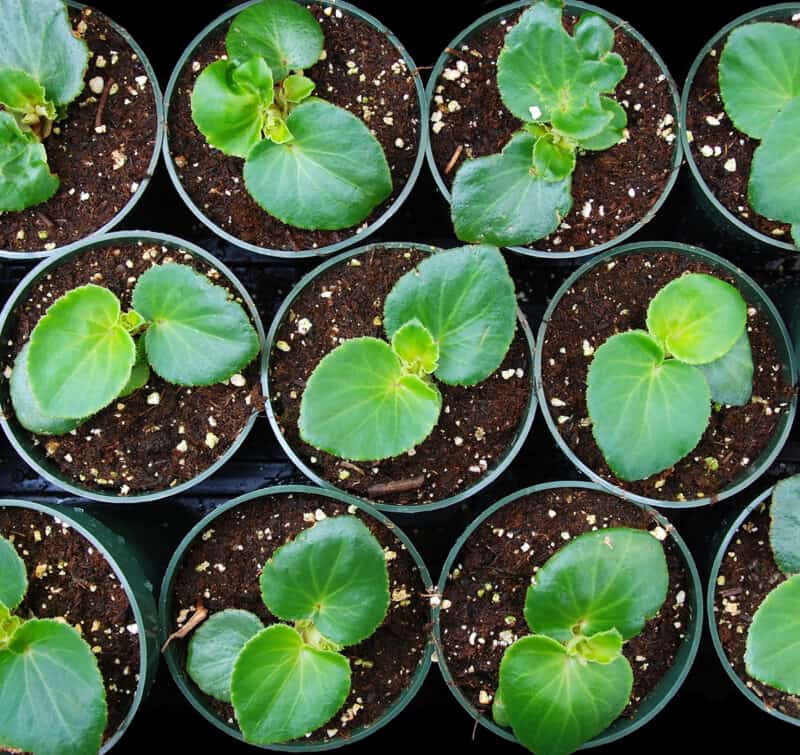
Planting Stems or Rhizomes
This is my preferred way of propagating because it’s so much less challenging than seeds.
Take a 4 inch cutting of a stem and remove any leaves from the bottom half. Bury it vertically into a damp seed raising mix with half of the stem sticking out of the soil.
Keep the mix moist and, in a few weeks, a new plant should have established itself. Give it a little tug to see if it resists and watch for new leaves forming.
Transfer to a bigger pot as it gets larger.
You can do the same with a small piece of rhizome. Plant it horizontally in the pot and cover with an inch or two of seed raising mix. Keep it moist and in a few weeks, you should see a new plant emerge.
Leaf Cuttings
You can plant begonia leaf and get a plant from that. It takes a couple of months and is not as reliable as the other methods, but it’s always worth a try.
Take a healthy leaf and plant the stem end into seed raising mix about 1/2 an inch deep. Mist well with water and place the container in a plastic bag. Put this in a warm location with plenty of light.
Keep the soil moist and see if you get another plant sprouting.
Container Planting
Begonias grow well in containers and add colorful charm to any area.
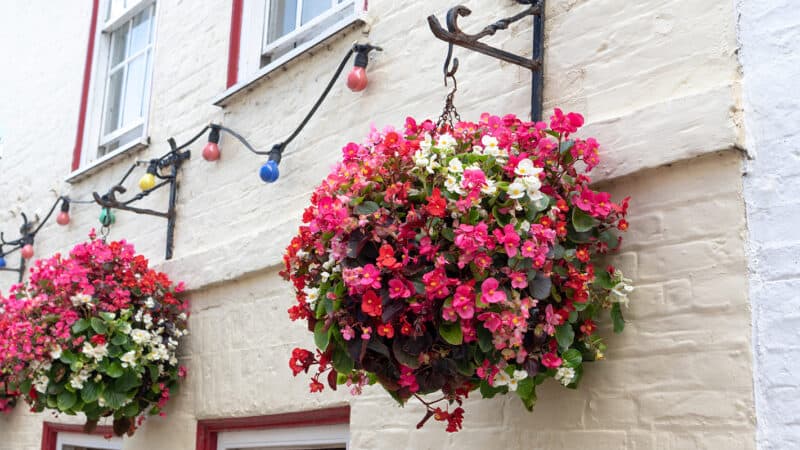
Any upright variety looks good in specimen containers, while the crawling or low-growing types are perfect for hanging pots or mixed containers.
Use a good quality potting mix that drains well, but doesn’t dry out. Begonia won’t survive sitting in water, so ensure the potting mix never gets waterlogged. They prefer consistent moisture.
Your choice of container should match the mature size of your plant. You may need to stake your begonia, depending on the height.
You’ll also need to ensure good airflow. In stuffy conditions, begonia flowers wilt and look unhealthy. That means that you shouldn’t overcrowd the container, and don’t place it in an area without adequate air circulation.
Planting begonias in containers is a sensible choice in colder areas because you can move them inside before the cold affects them.
Caring for Begonias
Begonias need regular care, including food, water, and some pruning to keep them looking their best and healthy enough to fight off disease.
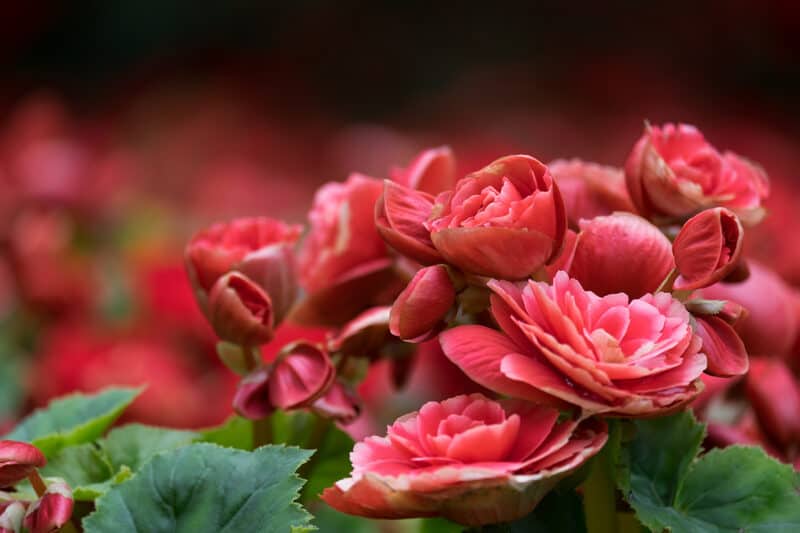
Fertilizer
I feed my edible begonia with good quality, organic liquid fertilizer each week. One targeted at flowers at 1/4 strength is a smart idea.
Begonias do best if they get regular food. Instead of monthly or bi-monthly feedings, they should get regular and frequent feedings, about once a week, but not at full strength.
Water
Water the soil around the base of the plant. Don’t let the soil dry out, but don’t allow it to become waterlogged. You’re aiming for a consistent texture something like a well-wrung out sponge.
Pruning
If your begonias get leggy and scraggly, you can cut them back. They’re quite hardy in this respect.
I’ve had sad-looking begonia and cut them back to a few inches off the soil and they’ve bounced back.
Shape your begonia, deadhead it and prune if needed regularly throughout the growing season.
You can cut the plant back in winter and dig up the rhizomes if needed. Store them in a dry place over winter.
My area isn’t that cold, so some years I will cut the plant right back and leave it in the ground to regrow next year.
Companion Planting for Growing Begonia
You can usually find me growing begonias near my vegetables and fruit trees to attract bees.
I have also planted nasturtiums in pots in amongst the begonia.
Begonias are one of those plants that you can plant with just about anything that has similar growing requirements, so think about hostas, impatiens, caladiums, and the like when you’re planning your garden.
Common Problems and Solutions for Growing Edible Begonia
Begonia can be affected by a wide range of pests and diseases, but with good garden hygiene and healthy soil, you can minimize a lot of problems.
Powdery Mildew
This fungus thrives on plants with little airflow and in areas that are warm and dry with high humidity.
It’s recognizable as a dry powdery substance all over the growing leaves on your begonias.
Make sure you have good airflow between plants and be sure to water at the base, rather than on the foliage.
If you start to see it forming, spray plants with a 50:50 mix of water and milk, and remove and throw away any infected foliage.
Mealybugs
Mealybugs are sap-sucking insects that weaken your plants and excrete honeydew that can attract sooty mold to your growing begonias.
Controlling mealybugs can be difficult. They have hard skin, which protects them from many chemicals.
Prune away areas of the plant that are infected. You should also purchase or encourage beneficial insects like ladybugs and lacewings.
Neem oil applied early on and regularly can also make a big difference.
Thrips
Another sap-sucking insect, thrips are normally found in large numbers. They suck the sap and usually leave little black excretions all over your plant.
The best control of thrips is a defense to prevent them. Use a good quality, organic insecticidal soap or neem oil. Make the plant unpalatable for them in the first place.
Mites
There are several varieties and they are all tiny. Sometimes you see them because you’ve found their webbing, rather than the actual bugs themselves.
Mites chew on the leaves and make them look unsightly and unhealthy. They can also cause a plant to become sick or stunted.
Mites build up quickly, so control them with an organic spray containing sulfur, or neem oil to suffocate them.
Keep your begonias in the ground clear of weeds.
Stem Rot
If you’ve overwatered your begonia, or the soil isn’t draining enough, you may get stem rot.
You’ll notice your begonia yellowing and getting weak. No matter what you do, you can’t save it.
By the time you notice the damage in the foliage, it’s difficult to save your plant. Remove the plant completely, along with some of the soil where the plant was.
To avoid stem rot, make sure your soil is well-draining and don’t over water your garden.
Eating Begonias
Many begonias are not edible, so make sure you plant one of the edible varieties if you plan to dig in. Ask for advice at your local nursery if necessary. Also note that in some varieties, only the leaves, and flowers are edible. Others can be eaten from root to tip.
B. annulata, B. auriculata, B. barbata, B. gracilis, B. grandis var evansiana, B. hernandioides, B. malabarica, B. mannii, B. picta, B. palmata, B. plebeja, B. Semperflorens, B. rex and B. roxburghii are all edible to some degree.
You can use the plants to make tea, sauces, in salads, or even fried.
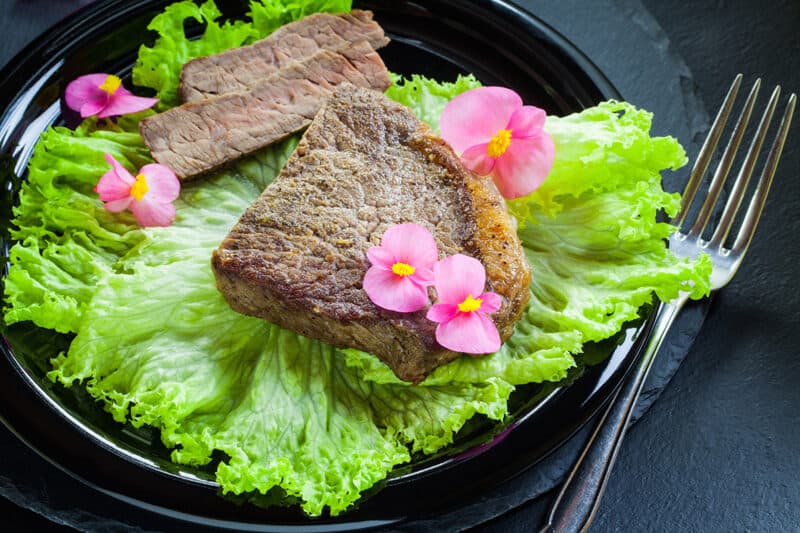
Medicinally, throughout history, they’ve been used as a salve for wounds and to treat coughs and fever.
Begonia should only be eaten in moderation and you should avoid the plant if you have gout, kidney stones or rheumatism due to the oxalic acid.
Begonia are toxic to many animals, so be wary of your livestock. Pets shouldn’t be allowed to get into the plants, either.
Make sure that if you’re not growing the begonias yourself that they haven’t been treated with pesticides.
